Sunny Yang is a Kronos
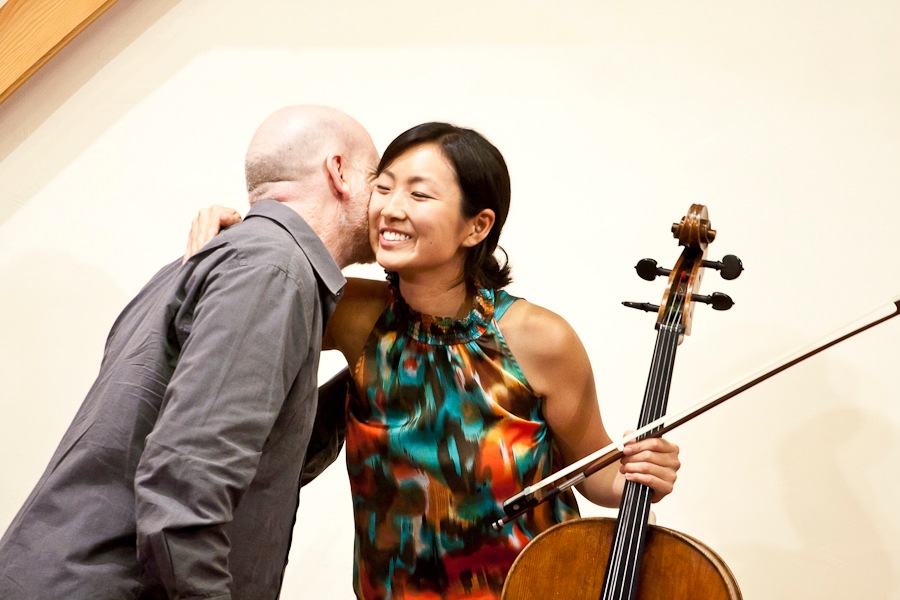
Composer in Residence Brett Dean congratulates Sunny Yang at Yellow Barn (Photo: Zachary Stephens)
Yellow Barn alumna Sunny Yang recently accepted a position as cellist of the Kronos Quartet. Artistic Director Seth Knopp took this opportunity to congratulate Sunny and talk about her 2011 performance of Berg's Lyric Suite at Yellow Barn.
The Reason for Cuatro Corridos
Jon Potter writes for The Brattleboro Reformer:
"What would your life be like to be in a place where you’re held against your will physically, but even if you get out of it, you’re still a slave not just because of physical restrictions, but also because you’re also invisible in society?"
That was the question Susan Narucki posed, as she discussed her new venture, a chamber opera about human trafficking across the U.S.-Mexico border. She added, "I can’t even put into words how outrageous this is."
So she and some collaborators are putting it into words...and music.
Soprano Narucki, writer Jorge Volpi, four composers and three other musicians are in Putney this week working on the music for "Cuatro Corridos," a new chamber opera based on real events from the frontlines of the immigration issue. They are here as part of Yellow Barn’s Artist Residency Program, sweating the musical details in preparation for a May 8 premiere in San Diego, Calif.
"It never occurred to me that there was so much trafficking in humans across the border," said Narucki. "It’s a kind of abuse of human rights that is under the radar."
Narucki connected with a friend of a friend who was interested in writing a libretto about this. From there, the idea of a chamber opera grew.
"One of the things that opera does best is it can tell us about emotionally complex feelings and situations and not always in words," she said. "So much of this is charged with emotion. I can’t imagine that it could be a play because it is too charged."
Narucki is not sure what effect "Cuatro Corridos" will have, but she’s happy to do her part.
"I’m an artist not a politician, so what can I do? I don’t know if it’s actually going to raise awareness of the problem, but it’s just what I can do," she said. "For some time, I have been interested in performance projects that take the music of our time and put it in the context of community."
Read more about the Cuatro Corridos Artist Residency in Putney, VT
Introduction to Cuatro Corridos
In pre-Hispanic times, the village of Tenancingo in the Mexican state of Tlaxcala—then an independent dominion—was characterized by a strange and obscure tradition: the rearing of prostitutes to be sold or handed over to the enemy, generally a rival Nahua tribe. The girls were chosen in early childhood and brought up especially for the purpose.
The curious thing is that, many centuries later, this appalling tradition continues, except that now it is the parents themselves who send off their daughters to swell the ranks of the prostitutes. For years now, there has existed a human traffic between this small village and the U.S.-Mexico border, in which young women are sold and exploited by mafias to serve as prostitutes for illegal migrant workers in southern California.
In 2001 the authorities dismantled the network of the Salazar Juárez brothers—Julio, Tomás, and Luciano—who for years had been kidnapping Mexican women and forcing them to work as prostitutes in the so-called Fields of Love near the strawberry farms around San Diego. The case was brought to light in a well-known investigative report published in The New York Times Magazine.
The libretto of Cuatro Corridos (Four Corridos) is based on this two-nation border story of human trafficking, to be told by four of its central characters: a female member of the Salazar Juárez brothers’ kidnapping ring (Dalia); a Chicano policewoman in San Diego, who discovers the ring and functions in a way as the narrator of the story (Rose); and two of the victims, young women from Tlaxcala forced to work for months in the Fields of Love (Azucena and Violeta).
The Mexican women will sign in Spanish (with occasional allusions to Nahuatl), while the policewoman Rose will sing in English (with occasional Spanish expressions). As the title of the opera suggests, the libretto will be in verse, generally the lines of four feet typical of the Northern Mexican ballads known as corridos.
Read more about Cuatro Corridos and the performance on March 30, 2013 in Putney, VT
Steven Mackey discusses "One Red Rose"
Honoring President Kennedy, this November Yellow Barn presents a program in which words, seeking to comprehend the complexities of that time, find illumination in the music of Olivier Messiaen and John Cage, and One Red Rose, a new work by Steven Mackey co-commissioned by Yellow Barn with the Nasher Sculpture Center and Carnegie Hall.
Steven Mackey offers the following description of his new work, with excerpts performed by the Brentano String Quartet:
Yellow Barn's Award for Adventurous Programming
On Sunday, January 20th at Chamber Music America's national conference in New York, Yellow Barn was honored with a 2013 Award for Adventurous Programming. Yellow Barn was selected from a national pool to receive the award reserved for a large-scale presenter of mixed repertoire.
Established jointly by Chamber Music America and ASCAP, the annual Adventurous Programming awards recognize U.S.-based professional ensembles and presenters for distinctive programming of music composed within the past 25 years. The recipients, chosen by an independent panel of judges, were evaluated on the basis of their programming and innovations in attracting audiences to performances of new music.
“Innovative presenters and artists in the chamber music community are introducing this music to audiences around the country," said Chamber Music America’s CEO, Margaret M. Lioi. "This year we are pleased to recognize eight ensembles and presenters whose accomplishments in this area are particularly inspiring,”
Yellow Barn Board member and former Board President Victoria Roth was present on Sunday to receive the award on behalf of Artistic Director Seth Knopp. “What a tremendous honor for Yellow Barn to receive this award and to have Seth Knopp's inspiring and exciting programming recognized by two national organizations,” said Roth before continuing to acknowledge Yellow Barn audiences for the critical part that they play in bringing Yellow Barn’s programming to life. “One of the wonderful elements of Yellow Barn concerts and events is the curiosity that the audiences bring to the concerts. They expect to hear something new or to hear something familiar in a new context. Those audience members will be delighted to learn that the unique programs they've come to expect at Yellow Barn have been recognized by Chamber Music America and by ASCAP.”
Composers have been a part of the Yellow Barn community since its founding in 1969, and resident composers have included George Crumb, John Cage, Brett Dean, Karel Husa, Aaron Jay Kernis, John Harbison, Philippe Hersant, Melissa Hui, Fred Lerdahl, David Ludwig, Mario Davidovsky, Osvaldo Golijov, Harold Meltzer, Melinda Wagner, Christopher Theofanidis, Steven Mackey, and Stephen Coxe. New music is woven throughout Yellow Barn's long history of performances, and today this includes not only the summer festival, but also the Young Artists Program (for composers and performers ages 13-20) and the fall, winter, and spring Artist Residencies. In 2013 eight composers will be on campus writing new works in collaboration with performers, and Yellow Barn will present the premiere performances of six new works by David Fulmer, Lei Liang, Steven Mackey, Hilda Paredes, Hebert Sandrin, and Arlene Sierra.
Images from Utopia/Euterpe/Dystopia
Images from Utopia/Euterpe/Dystopia (Photos: Zachary Stephens)
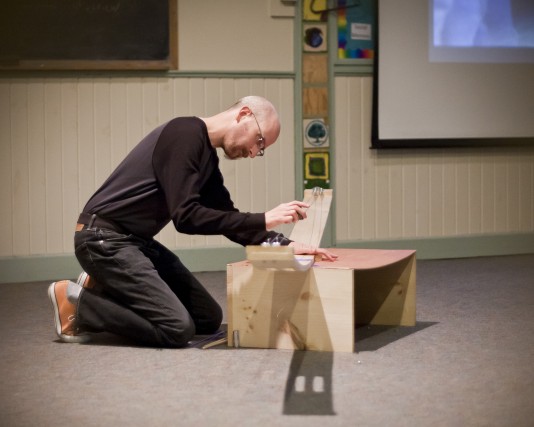
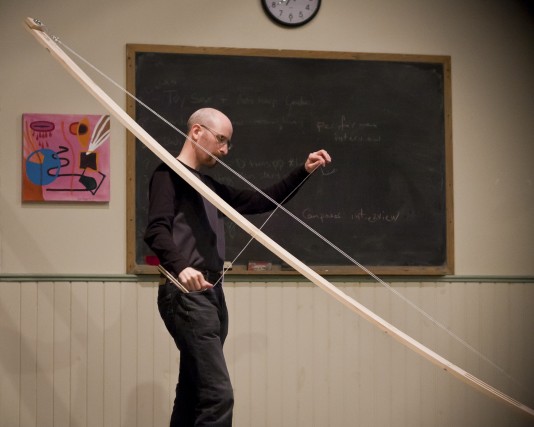
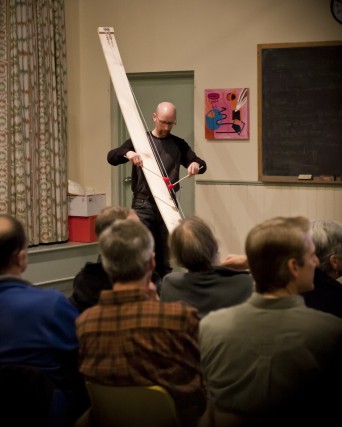
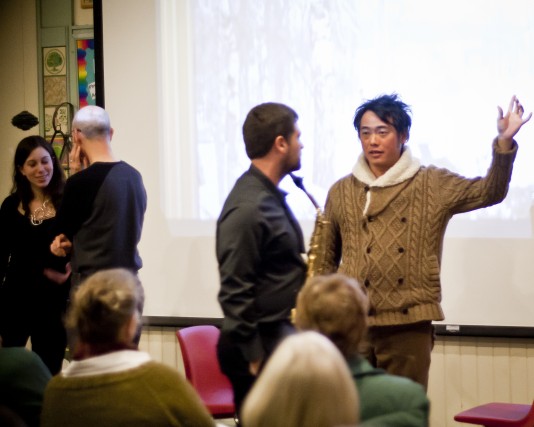
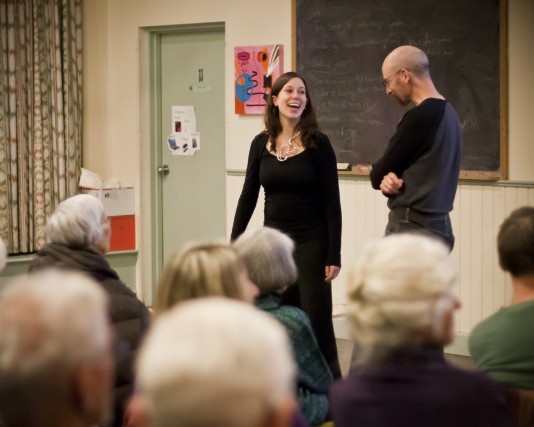
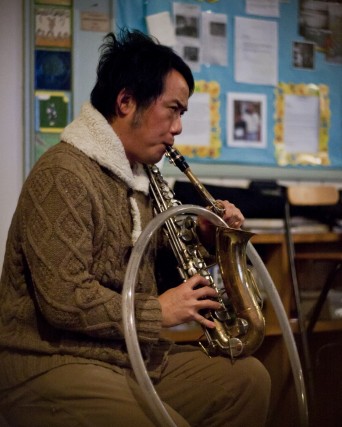
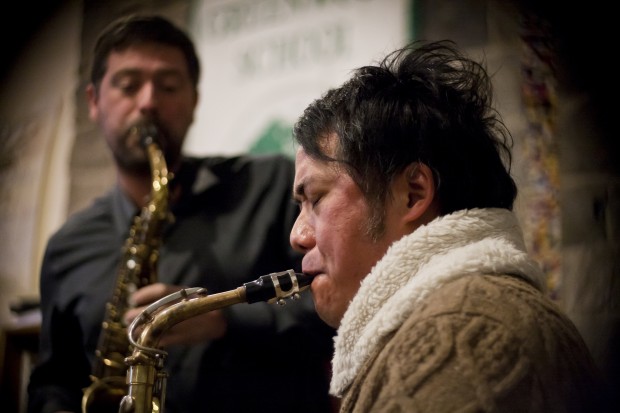
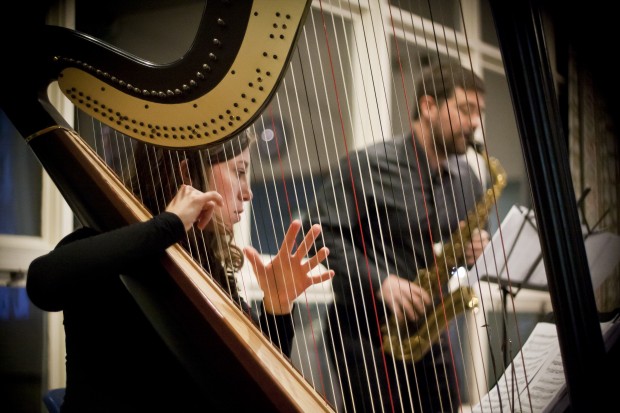
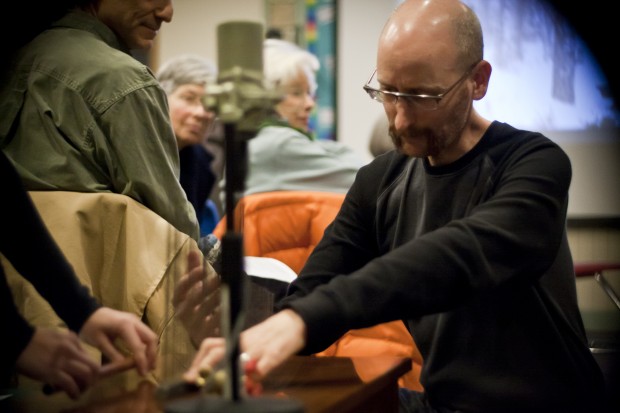
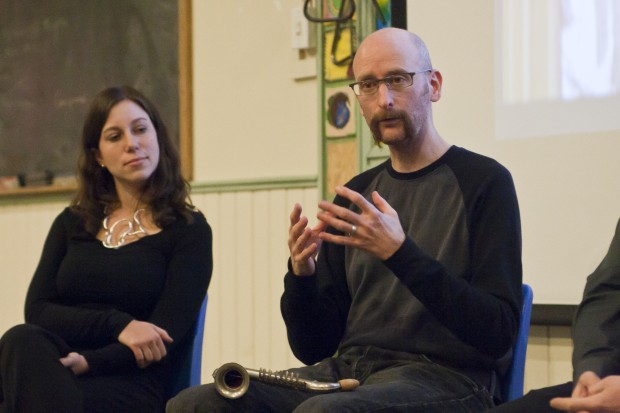
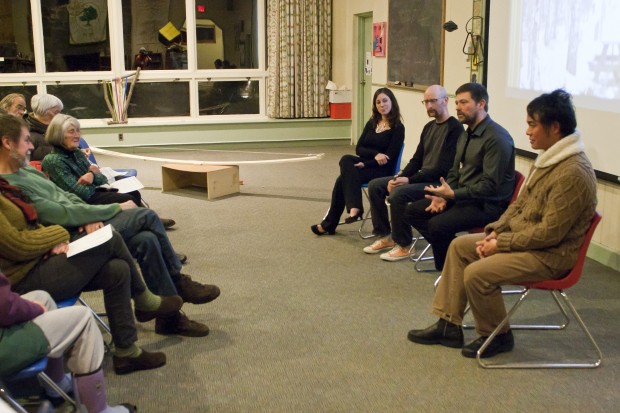
After a week of intense work together on Yellow Barn's campus at the Greenwood School in Putney, Vermont, composers David Smooke and Ken Ueno, along with harpist Jacqueline Pollauf and saxophonist Noah Getz, presented the first iteration of their collaborative composition "Utopia/Euterpe/Dystopia", a new performance piece that includes sounds from new inventions—a 10-foot harp and an extended saxophone—as well as pre-composed works for traditional harp and saxophone.
